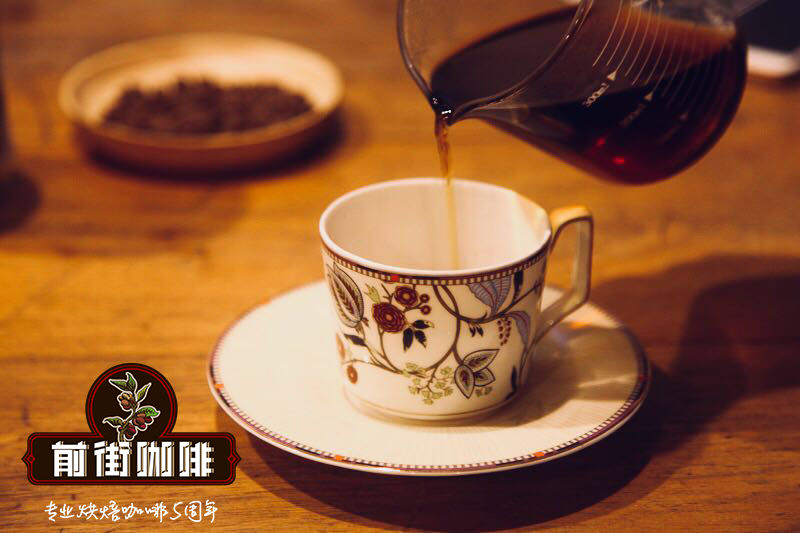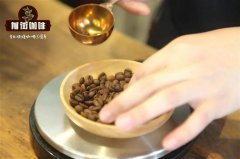Introduction of honey-treated coffee beans, honey-treated coffee beans taste good? Flavor description of honey-treated coffee beans

Professional coffee knowledge exchange More coffee bean information Please pay attention to coffee workshop (Weixin Official Accounts cafe_style)
There are three main types of coffee treatment: sun, water, honey treatment. Sunlight method is to directly expose coffee cherries before removing the shell and pectin layer; washing method is to sift out coffee pulp before exposure and ferment to remove pectin layer; honey treatment method is between sunlight method and washing method: after sifting out coffee pulp, keep pectin layer directly and expose to sunlight. Honey-treated coffee beans started out as a way for some people to see their coffee beans continue to improve in quality, and it started in Costa Rica, and the process is now on the rampage.
So why did Costa Rican coffee farmers plan to treat their beans with honey in the first place? When coffee farmers want to increase the quality or price of their coffee, they have three options: change the species of coffee, change the elevation at which they grow it, or change the treatment. Just as most people brew coffee in a simpler way, adjusting the grind and powder levels before adjusting the water, pressure and temperature of the coffee machine, most coffee farmers want to change the treatment before they consider planting new trees or relocating their farms, which requires time and money.
First, coffee farmers pick ripe cherries from coffee trees and sift them out of the outer pulp, as mentioned above, to retain the pectin layer around the beans. The pectin layer retains a high proportion of sugar and acid, which are key to honey processing coffee beans.
The following steps are the most complex and delicate part of honey processing coffee beans: exposure. The time point must be well mastered, the length of time is the key, if the exposure time is too short, the pectin layer cannot be converted into coffee beans, and the time cannot be too long, the action must be fast to avoid internal fermentation of beans and moldy beans.
So how do you strike a balance? Put the beans on a sun rack or concrete floor and turn them several times per hour for the first few days until they reach the desired moisture content, a step that usually takes 6-10 hours. After 6-8 days, turn at least once a day. Time consuming, huh? The reason why honeyed beans are so time-consuming is that each night the beans absorb moisture from the air, so that they need to spend more time in the sun the next day.
When the coffee is fully exposed, it is almost ready for drying and roasting, just like any other treatment.
The biggest feature is that it is not the whole coffee fruit directly to the sun, but first remove the exocarp and part of the pulp, retain a certain degree of colloid layer, together with the colloid layer dried. Dry places are also sunbeds. As for tools, they are mainly scaffolding. If they are sticky, cleaning is inconvenient. After drying, the procedure is similar to that of the same day.
Important Notice :
前街咖啡 FrontStreet Coffee has moved to new addredd:
FrontStreet Coffee Address: 315,Donghua East Road,GuangZhou
Tel:020 38364473
- Prev

Introduction to the characteristic treatment method of Pacamara Coffee growing area? Is the Pacamara coffee good?
Professional coffee knowledge exchange more coffee bean information please follow the coffee workshop (Wechat official account cafe_style) the Pacas family has an one-stop coffee business from seed to cup (coffee farmers
- Next

Rosa coffee has a charming orange honey flavor and floral genes as if it had been kissed by the Creator.
Professional coffee knowledge exchange more coffee bean information Please follow the coffee workshop (Wechat official account cafe_style) after drinking rose summer, do not want to drink anything else. As if it had been kissed by the Creator, Rosa Coffee has a charming orange honey flavor and floral genes. Since it won the BEST OF PANAMA Cup test in 2004 and became famous, it has won various championships one after another.
Related
- What is the meaning of lactic acid fermentation with coffee bean treatment?
- How to judge the state of foam by sound?
- How does the latte pull out the unicorn pattern? Come to get for a little trick to improve the flower pull!
- Will flower pulling affect the taste of the latte?
- Do you know the history of coffee?
- The difference between honey treatment and sun washing what is raisin honey treatment?
- What kind of milk can a novice use to make coffee foam to keep the foam longer? The correct method and skills of milking tutorial sharing
- Why do washed coffee beans taste sour? Flavor characteristics of washed Coffee
- Introduction to the skill of how to practice the size and height of water injection around the circle of hand-brewed coffee
- How do beginners practice coffee flower drawing from scratch?

